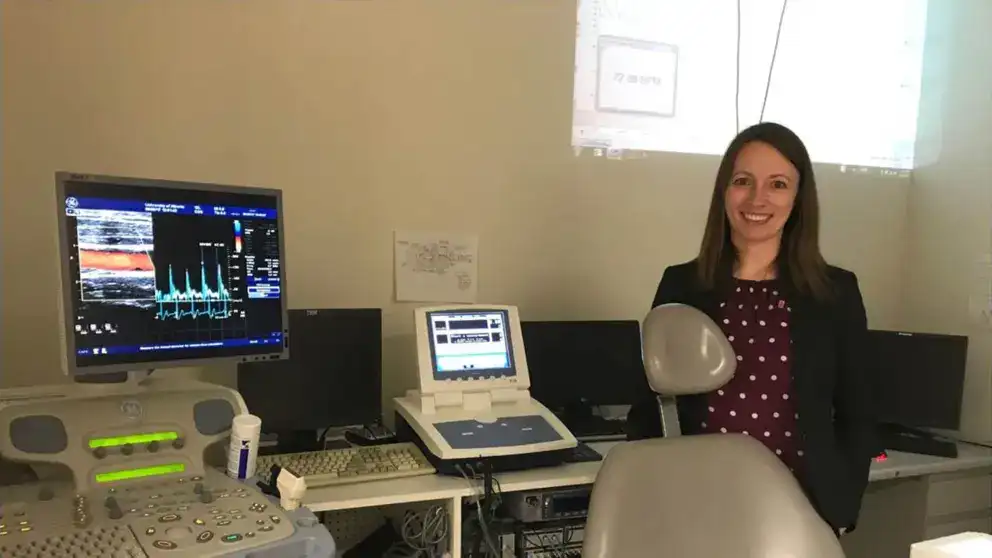If you’re planning on having a baby, Dr. Margie Davenport has a message for you: Keep on walking, swimming, lifting weights, doing yoga, cycling, running — the more the better.
Dr. Davenport, with funding from Heart & Stroke donors, chaired a panel of Canadian experts that spent three years reviewing the latest scientific evidence on the impact of exercise in pregnancy. The result is the new 2019 Canadian Guideline for Physical Activity throughout Pregnancy.
We asked Dr. Davenport, an associate professor of kinesiology at the University of Alberta, what this research means for women, babies, heart disease and stroke.
What did you learn about the role of exercise in pregnancy?
We now have very strong evidence supporting the safety and benefits of being physically active throughout pregnancy for both mother and baby.
Specifically, we found that women who exercise during pregnancy have a 40% reduction in the risk of developing gestational diabetes, gestational hypertension and pre-eclampsia. These are serious complications that can endanger both mother and baby.
Women who exercise during pregnancy also have a substantial reduction in the severity of depressive symptoms, and a decreased risk of having a large baby.
Are there any dangers to being active in pregnancy?
We found that there was no increased risk of having a miscarriage, small baby or pre-term birth, all of which are reasons women have told us they are less likely to exercise during pregnancy.
These guidelines really demonstrate that being physically active isn’t only safe, but it’s very beneficial for both mother and baby.
Were you surprised by the findings?
The magnitude of reduction of pregnancy complications – that we were actually quite surprised at.
And it’s really important because we know that women who develop gestational diabetes, gestational hypertension and pre-eclampsia are at life-long elevated risk for developing cardiovascular disease later in life.
These risk factors are as strong as smoking.
So this has the potential to prevent future heart disease and stroke in some women?
If we can reduce the risk of developing these conditions we may actually be able to reduce or delay the development of cardiovascular disease later in life. We don’t have that information yet but it’s certainly promising.
What do the guidelines say?
Here are the main recommendations.
- First, all women without contraindications – meaning a medical reason not to exercise – should be physically active throughout their pregnancy, from conception to delivery.
- Pregnant women should accumulate at least 150 minutes of moderate-intensity physical activity each week to achieve clinically meaningful health benefits and reductions in pregnancy complications.
- Physical activity should be accumulated over a minimum of three days per week. But being active every day is encouraged.
- Pregnant women are encouraged to incorporate a variety of aerobic and resistance training activities.
So more exercise is better?
We found that increasing volume as well as frequency of exercise had a greater reduction. So even beyond that 150 minutes a week, we continued to see greater benefit in reducing those complications.
Do we know why exercise has such an impact?
That’s a complex question that involves many factors. But we know that women who exercise during pregnancy have improved blood pressure control as well as health of the blood vessels.
How have Heart & Stroke donors helped this work?
My National New Investigator Award through Heart & Stroke essentially meant that I was able to double the amount of time I spent on research. As a result, these guidelines got finished.
What’s next?
I’ll be applying back to Heart & Stroke to get more funding to look at long-term followup of women who exercised during pregnancy, and their babies.
The next area that we need to start looking at is if the women who are at high risk for developing these conditions (gestational diabetes, gestational hypertension and pre-eclampsia) don’t actually develop them, what does it mean for their long-term health?
- Learn more about women’s unique risk factors.
